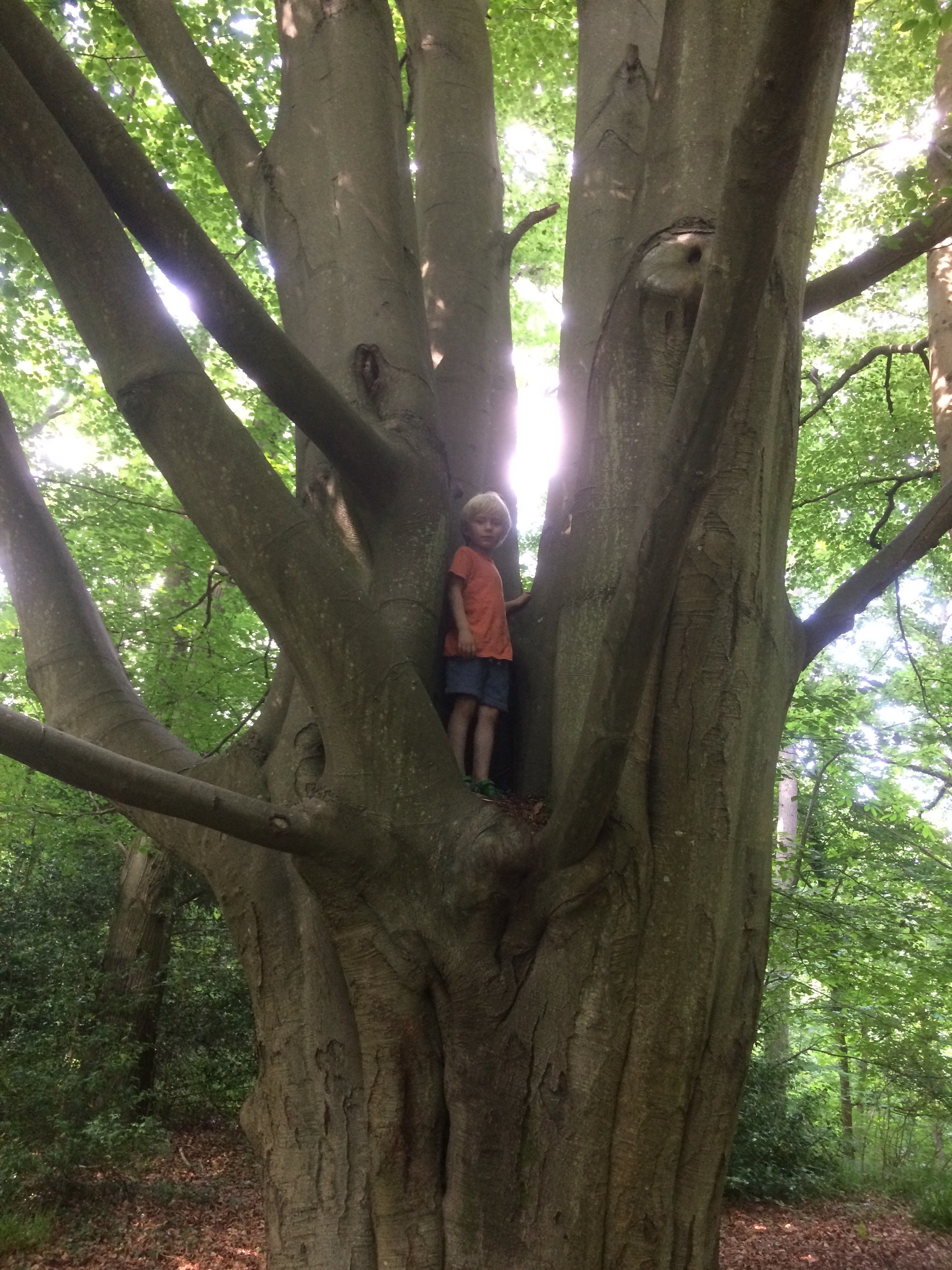‘Beech’ Paradise Bottom, Leigh Woods, Bristol
Beech (Fagus sylvatica)
The beech tree is native to south-east England and south-east Wales. Beech foliage supports the caterpillars of moths, and its seeds or ‘mast’ are eaten by mice, voles, squirrels and birds. Beech trees live a long time and provide gnarled and knotted habitats for many deadwood specialists, such as hole-nesting birds, wood-boring insects, fungi, mosses and lichens. Beech wood burns well and was traditionally used to smoke herring. The edible mast was fed to pigs and it can also be roasted and used as a coffee substitute. The beech is a climax species in deciduous woodland and can overpower even the oak.
Symbolism: The beech is regarded as the queen of the woods, where oak is the king. Traditionally associated with: eternal life and rebirth; the duality of life and death; change and transformation, perseverance; protection; power and strength.
About the tree:
This tree is immense and it is wonderful to sit in its grand and soaring cathedral-like presence. Its size made it difficult to draw, as the perspective looking up can be very deceiving. The dense carpet of its fallen leaves and mast suppresses other plants and provides a peaceful clearing in which to sit and draw or write. I started the drawing in July 2019 and finished it in January 2020. Thank goodness for fingerless gloves! I was visited by long-tailed tits and a muntjac deer.
About Leigh Woods:
Leigh Woods is a National Nature Reserve and part of the Avon Gorge Site of Special Scientific Interest (SSSI), and situated on the outskirts of Bristol near the Clifton Suspension Bridge. It is an ancient broad-leaved woodland with ancient coppice and veteran pollards. An exceptional number of Nationally Rare and Nationally Scarce plant and insect species are found here. It is known for its limestone rock flora and it is the richest site for white beams in the world, with three endemic species. It also includes historic wood pasture, with many veteran oak pollards. Together with Ashton Court Estate, of which it used form a part, this area has one of the largest populations of veteran trees in the South West. It also contains the ramparts of Stokeleigh Camp, an Iron Age hill fort.
At the northern end of Leigh Woods is Paradise Bottom. This included the Leigh Court Estate and was part of the ground laid out by Humphry Repton. An interesting area for trees with some of the first planting of the giant redwood, imported in the 1860s. The valley bottom has a number of pools and a stream banked with slopes of bluebells in spring.
Directions:
GPS: ST 54665 74645
What3words: added.speeds.mostly
For a hand drawn walking map click here:
Bike or walk:
From the Bristol docks area the River Avon Trail follows the river downstream, under the suspension bridge and up into Leigh Woods. Go through the first tunnel after the bridge and ascend via Nightingale Valley (It is hard to get a bike up here so if cycling you’d be better accessing Route 41 from the gorge at the far end of the wood - see below)
From Clifton go over the Bristol suspension bridge and turn left into North Road. Follow the road round and enter Leigh Woods via the wooden gates.
Once in the woods you will need to use my map to head to Paradise Bottom via the National Cycle Network 41. Continue on the main track as it sweeps left downhill towards Leigh Court (instead following route 41 through the woods to the gorge) and you will come to some green bollards at the bottom of the hill. The beech tree is in a clearing on your right just after these.
From the A369 take Pill Road. At the end of Pill Road take the right hand fork and you will see a sign for Paradise Bottom. Rather than walk down the valley past the Paradise Bottom information board take the wide gravelled track to your right past the green metal barrier. After 5 minutes, just before some green bollards, you can see the beech tree in a clearing to your left.
From the gorge: Access route 41 from the gorge at the Pill end of the woods and turn right onto the main gravelled track at the top of the hill. Going down the track you will come to some green bollards at the bottom of the hill. The beech tree is in a clearing on your right just after these.
Bus:
Take the X4, Bristol-Portishead bus from Bristol Bus station, or by the Harbourside on Anchor Road and alight at Sandy Lane , Abbots Leigh. From here you can enter the wood via Pill Road (signposted to Brackenwood Garden Centre) and follow the directions from the A369 above.
Car:
Park on North Road or access the main car park from the A369 by going through The Gateway to the end of the beech-lined Coronation Avenue. From here you will need to walk down the hill on the National Cycle Network 41 track to get to Paradise Bottom as described above.
